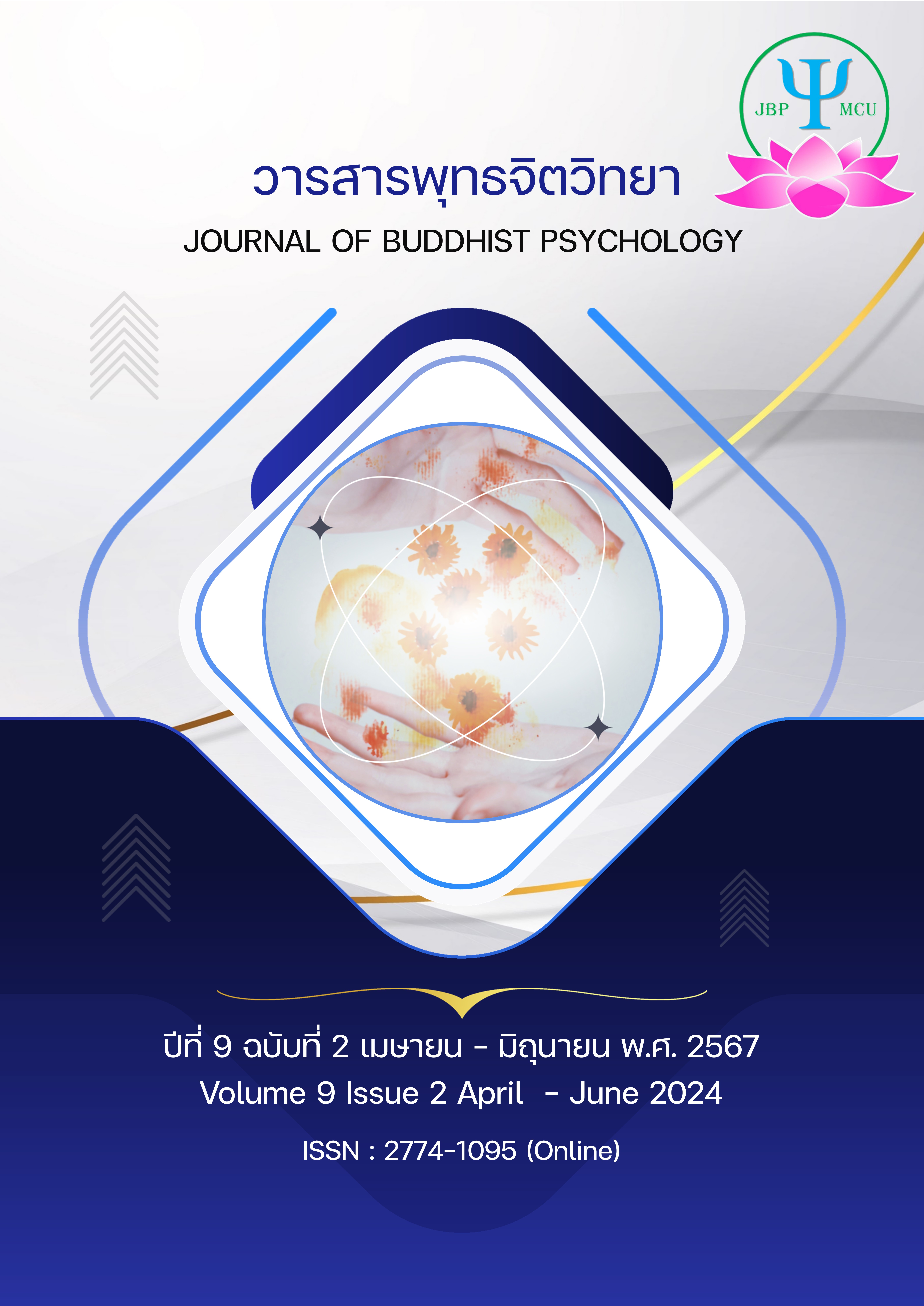แนวทางพัฒนาศูนย์พัฒนาจิต ส่งเสริมการท่องเที่ยวเชิงจิตวิญญาณ สำหรับนักท่องเที่ยวในพื้นที่สามเหลี่ยมอันดามัน
Main Article Content
บทคัดย่อ
การศึกษวิจัยมีวัตถุประสงค์เพื่อ 1) ศึกษาความต้องการพัฒนาจิต ส่งเสริมการท่องเที่ยวเชิงจิตวิญญาณ 2) ศึกษารูปแบบการพัฒนาจิต ส่งเสริมการท่องเที่ยวเชิงจิตวิญญาณ 3) ศึกษาแนวทางการพัฒนาจิต ส่งเสริมการท่องเที่ยวเชิงจิตวิญญาณ สำหรับนักท่องเที่ยว ในพื้นที่สามเหลี่ยมอันดามัน เป็นการวิจัยแบบผสมผสาน เชิงปริมาณกลุ่มตัวอย่างเป็นผู้มีส่วนเกี่ยวข้อง 384 คน ตามสูตรของทาโร่ยามาเน่ ใช้แบบสอบถาม ส่วนการวิจัยเชิงคุณภาพ กลุ่มตัวอย่างเจาะจงเป็นผู้มีส่วนได้เสีย 30 คน ใช้แบบสัมภาษณ์ พบว่า ระดับความต้องการพัฒนาจิตส่งเสริมการท่องเที่ยวเชิงจิตวิญญาณ ภาพรวมอยู่ในระดับมาก (4.01) โดยการทำสมาธิอยู่ในระดับมากที่สุด (4.83) การจัดเตรียมอาหารที่ดีต่อสุขภาพ (4.60) และ การต้องการเรียนรู้สิ่งใหม่ ๆ (4.49) ส่วนรูปแบบการพัฒนาจิต คือ จัดสถานที่ มีเป้าหมาย ภายใต้หลักการ สร้างตำนาน สุขภาพจิต มี 4 กลยุทธ์ 13 แนวทาง คือ 1) จัดบุคลากรยกระดับมาตรฐาน 2) พัฒนาบุคลากรสู่มาตรฐาน 3) พัฒนาสถานที่ท่องเที่ยว 4) พัฒนาต่อยอดอาชีพส่งเสริมการท่องเที่ยว 5) พัฒนาบุคลากรทางการท่องเที่ยวที่มีคุณภาพ 6) พัฒนาผลิตภัณฑ์ บรรจุภัณฑ์ และส่วนผสมทางการตลาด 7) ศึกษาชุมชน วิเคราะห์ ออกแบบ ทิศทางการพัฒนา 8) เขียนโครงการเสนองบพัฒนา 9) ขับเคลื่อนการพัฒนา ประสาน ติดต่อเครือข่ายการพัฒนา 10) สำรวจสถานที่ท่องเที่ยวในชุมชนทั้งหมด 11) กำหนดเส้นทางท่องเที่ยว 12) จัดทำสื่อโฆษณา 13) สร้างเครือข่ายทางการตลาด
Article Details

อนุญาตภายใต้เงื่อนไข Creative Commons Attribution-NonCommercial-NoDerivatives 4.0 International License.
เอกสารอ้างอิง
กรมส่งเสริมวัฒนธรรม. (2563). Taproot Thai Textiles: โครงการพัฒนามรดกภูมิปัญญาทางวัฒนธรรมผ้าไทยสู่สากล ประจำปี 2563/กรมส่งเสริมวัฒนธรรม กระทรวงวัฒนธรรม. กรุงเทพฯ: กรมส่งเสริมวัฒนธรรม กระทรวงวัฒนธรรม.
ขวัญใจ ทองศรี, สิริวัฒน์ ศรีเครือดง และกมลาศภูวชนาธิพงศ์. (2565). สร้างสุขที่แท้จริงได้ด้วยจิตที่งอกงาม. วารสารจิตวิทยา,20(1), 29.
คณะกรรมการนโยบายการท่องเที่ยวแห่งชาติ. (2566). แผนพัฒนาการท่องเที่ยวแห่งชาติฉบับที่ 3 (พ.ศ. 2566 – 2570). กรุงเทพฯ: คณะกรรมการนโยบายการท่องเที่ยวแห่งชาติ.
ชนิดา ทวีศรี. (2547). การท่องเที่ยวเชิงสุขภาพ (Health Tourism). สืบค้นเมื่อ 18 สิงหาคม 2560, จากhttps://www.l3nr.org/ posts/166878
ชัยณรงค์ ชัยจินดา, วิชิต อู่อ้น และภาริน ธนนทวีกุล. (2566). กลยุทธ์ของสถานประกอบการด้านการท่องเที่ยวเชิงสุขภาพในเขตพัฒนาการท่องเที่ยวฝั่งทะเลตะวันออกของประเทศไทย. วารสารสหวิทยาการวิจัย: ฉบับบัณฑิตศึกษา, 12(1), 262-272.
ณัฏฐ์วรดี คณิตินสุทธิทอง. (2563). ความต้องการของตลาดและศักยภาพในการรองรับการท่องเที่ยวเชิงสุขภาพของประเทศไทย. วารสารกระทรวงการท่องเที่ยวและกีฬา, 4(1), 1-12.
ตระกูล พุ่มงาม, สิริวัฒน์ ศรีเครือดง และ สุวัฒสัน รักขันโท. (2566). รูปแบบการพัฒนาศูนย์ปฏิบัติธรรมพุ่มวนารามสร้างสุขภาวะองค์รวมตามแนวพุทธจิตวิทยา. วารสารพุทธจิตวิทยา, 6(3), 176-178.
พระครูอุทิตปริยัติสุนทร, สมบุญ ทิพรังศรี, พระครูอุทิศธรรมพินัย และธนพัฒน์ เฉลิมรัตน์. (2567).การพัฒนากระบวนการท่องเที่ยวเมืองพระชนกจักรีวัฒนธรรมวิถีพุทธ. วารสารวิจัยวิชาการ, 7(2), 39.
ศิโสภา ริวัฒนา, ภัทรธิรา ผลงาม และ กำพล ศรีวัฒนกุล. (2566). การท่องเที่ยวเชิงสุขภาพในจังหวัดชลบุรี. วารสารมหาจุฬานาครทรรศน์, 10(3), 10.


